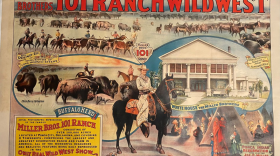On this date in 1909, the Washburn Leader informed readers of what one Grand Forks boy was up to. The newspaper reported that the young man kept a milk cow and some chickens. He spent his time reading poultry and stock journals. He made an average of $1.15 per day selling milk and eggs. He also sold his champion chickens for $5.00 a pair. The newspaper noted that his family always had milk, chicken, and eggs for the dinner table.
Researchers at land grant colleges recognized that young people were the future of agriculture. In the late 1800s they had learned that adult farmers tended to be set in their ways and skeptical of new developments. Young people were more willing to experiment.
In 1902, A.B. Graham started a youth club in Ohio. He called it the Corn Growing Club. About the same time, local after-school agricultural clubs caught on in many states. Young people were encouraged to actively participate in county and state fairs, exhibiting their livestock and produce. By 1912, the organization was called the 4H Club. The movement was officially nationalized in 1914. The foundation of 4H was to provide hands-on learning for youth in farming and homemaking. 4H adopted a clover pin with an H on each leaf as the group’s symbol. The H’s stand for head, hands, heart, and health.
4-H allowed young people to take field trips to destinations such as the Minnesota Grain Exchange. They were recognized for their accomplishments and often received substantial cash prizes. In 1931, a North Dakota sixteen-year-old was awarded $500 for his livestock judging skills. That would be $8,565 in today’s dollars.
In the early days of 4-H, boys focused on farming while girls were steered towards homemaking. Today, young people learn a variety of skills. While at one time 4-H was segregated with separate groups for white and minority students, the organization became integrated in the 1960s.
North Dakota’s 4-H is based at North Dakota State University. There is a club in every county. The goal is to provide activities for all young people to help them reach their full potential. Activities include educational programs, participation in county and state fairs, leadership activities, and camping.
Dakota Datebook written by Carole Butcher
Sources:
Washburn Leader. “What One Boy is Doing.” Washburn ND. 1/8/1909. Page 1.
Bismarck Tribune. “State Champions Named at Meeting of 4-H Boys, Girls.” Bismarck ND. 12/10/1931. Page 3.
Montana Farmer Stockman. “Can Farm People Visit the Minnesota Grain Exchange?” Great Falls, MT. 2/1/1952. Page 2.
4-H. “4-H History.” https://4-h.org/about/history/ Accessed 12/7/2020.
North Dakota State University. “North Dakota 4-H Development. https://www.ndsu.edu/4h/ Accessed 12/7/2020.



